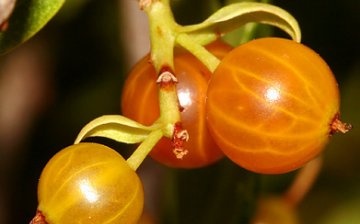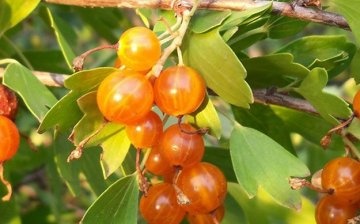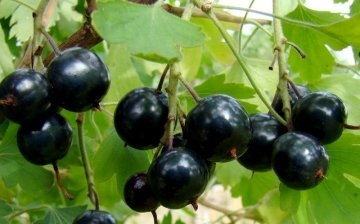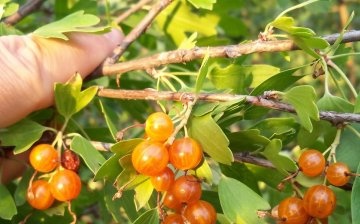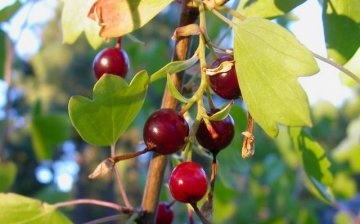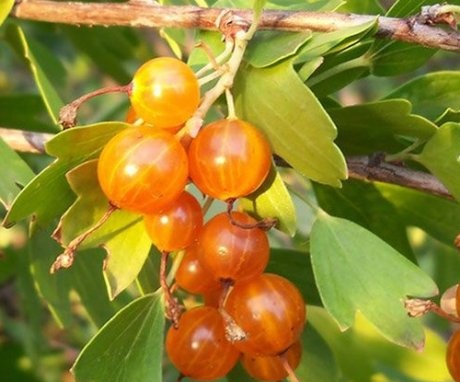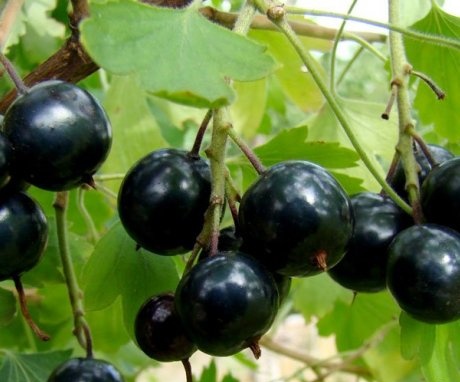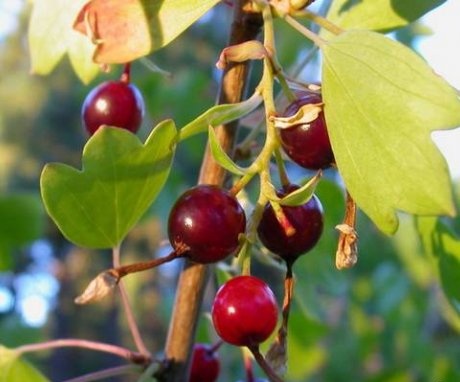Golden currant: varieties, species features and care
Speaking of currants, we are used to keeping in mind only black and red, and few people know about the golden variety. But such currant exists and is even quite popular among gardeners.
Content:
- Features of golden currant
- Golden currant varieties
- How to choose the right variety?
- Care for golden currants
Features of golden currant
In the wild this currant can be found in North America, which is its homeland. This shrub was brought to us in Russia in the 18th century, at that time it served as an ornamental plant.
Gardeners love golden currants for their amazing resilience. This bush able to survive both low temperatures and drought, and also tolerates attacks pests and does not succumb to disease. Golden currants will grow even where no other plants grow, such as in strong shade.
The shrub is not only a source of delicious berries, but also an ornamental plant.
You can make of it hedges... In summer, it looks beautiful thanks to the berries, and in autumn, thanks to the yellow-red foliage. By August, all other berry bushes have ceased to bear fruit, but golden currants are just beginning.
The characteristic features of the shrub:
- The berries smell the same as black currants and taste sweet with sourness. They can be used to make jam, make wine, jams, and also be consumed fresh.
- Golden currants are easy to care for and bear fruit well. The berries last for a long time and do not crumble.
- The shrub grows well in the sun, although it can bear fruit in the shade.
- Golden currants, whose varieties are not yet famous for their diversity due to their relatively newness, can grow up to 2 meters in height.
- The leaves are the same as those of red and black currant, but slightly smaller in size.
- During fruiting, branches can bend to the ground under the weight of the berries.
- The currant blooms in May-June. The flowers are yellow, beautiful and fragrant.
- The bush can be in the same place and bear fruit for 15-20 years.
- The shrub begins to bear fruit in the third year after planting. The richest harvest can be harvested in 5-7 years.
Golden currant varieties
The most common are only a few varieties of golden currant, which also have several varieties. They differ in yield, color, size.
The most popular varieties:
- Venus the Golden. A hybrid of golden and fragrant currants. The fruits are almost black, sweet with sourness. The bush is small in size, low and not too branchy. The leaves are smooth, three-toed. The berries are collected in a brush. Currant able to survive at a temperature of -40, so it is suitable even for areas with a harsh climate. Venus Golden has three hybrid varieties. These are Shafak, Ermak and Isabella. Shafak has light pubescent leaves, berries are dark red, dark elongated. Ermak's berries are black, sweet with a pleasant aroma. Isabella will delight you with black juicy berries with a slight sourness. The berries are not large, you can collect 4-6 kg from one bush.
- Laysan. This shrub is not in vain given the eastern name. It is rather tall, graceful with light leaves and bright amber berries. The fruits are small, but there are many of them.This currant does not differ in particular frost resistance. If the temperature drops below -30 degrees, the branches will begin to freeze.
- Uzbekistan large-fruited currant is a hybrid of fragrant and golden. It is distinguished by large fruits. The average weight of berries is 6-7 g, which is 2-3 times more than that of other varieties. Berries are black with yellow pulp. This variety is resistant to adverse environmental conditions such as drought, frost, pests.
- Kishmish currant. The berries are small, but ripen abundantly, especially if you plant several bushes nearby. There they will be better pollinated. This variety is famous for its high yield - up to 7 kg per bush.
- Siberian sun. As the name suggests, the berries are yellow. They are medium in size, smooth and juicy, refreshing in taste with a slight sourness. It begins to ripen at the end of July, it tolerates well both the sun and heat, and the shade, cold.
How to choose the right variety?
Despite the small variety, among the varieties of golden currant, there is plenty to choose from. In this case, it is necessary to take into account not only the wishes of the gardener, but also the characteristics of each individual variety.
When choosing a variety, the following aspects should be considered:
- Place of residence. Not all varieties are able to withstand extreme cold. When choosing a shrub, you need to find out where it was bred and whether it is adapted to the weather conditions in this region. Most often, golden currants take root well under conditions of a temperate continental climate, and varieties bred in Uzbekistan tolerate heat and drought well.
- Yield... Of course, a high yield depends not only on the genetic material, but also on the correct leaving. However, there is a certain maximum, which will be difficult to cross. In varieties of golden currant, the yield varies from 4 to 8 kg. When choosing a variety, you should definitely clarify this point.
- Appearance. When purchasing a shrub, the gardener must have a clear idea of what it will look like. Often, golden currants are purchased not only for the sake of useful berries, but for decorative purposes, and for some, decorative qualities are a priority.
- Care... Usually, the varieties do not differ much in care, they are all quite unpretentious. However, there may be features worth knowing about.
- The choice of a variety also depends on the goal set by the gardener. Berries of golden currant can be used for various purposes: fresh food, as a medicine, in the form of jam, jam, compote, pie filling. But if the berries are grown for sale, you need to choose the most fertile varieties that will give a lot of harvest.
- You shouldn't eat anything other than berries. The shoots and leaves contain senic acid, so it is not recommended to brew them or add them to tea.
Care for golden currants
In order for the shrub to take root well, you need it plant in the spring, when the frost has already passed. Can also be planted in autumn, when the leaves are just beginning to fall. Saplings it is advisable to buy in pots with closed roots, they will take root better.
For best fruiting, choose a sunny or partial shade location, but not completely shaded.
Dig the soil between the rows once a year. Regular watering and feeding... Shrubs need to be watered abundantly, but less often, and not often and little by little. Currants have a well-developed root system, so there should be enough water to soak all the roots. Immediately after planting, you need to pour at least 5 liters of water under each bush. For the entire growing season, currants need to be watered 3-5 times. This is enough for good fruit ripening.
The branches need to be pruned:
- Dry and least fruitful branches are removed, then there will be more berries. This should be done in late autumn or early spring, when there are no foliage or buds.
- Do not prune branches in the first year of planting.
- In the second year, you can remove too thin and weak shoots.
- Only 3-5 year old branches bear fruit well.Therefore, after the fifth year, remove all branches that are more than 4 years old.
If the currant does not bear fruit for 3 years, you should look for the reason. Sometimes it is enough to plant another bush for good pollination. Perhaps the bush has grown a lot and old dry branches need to be removed. Unsuitable soil may also be the cause. Although golden currants are not picky in terms of soil, they will not bear fruit in swamps and clay soils.
More information can be found in the video.



